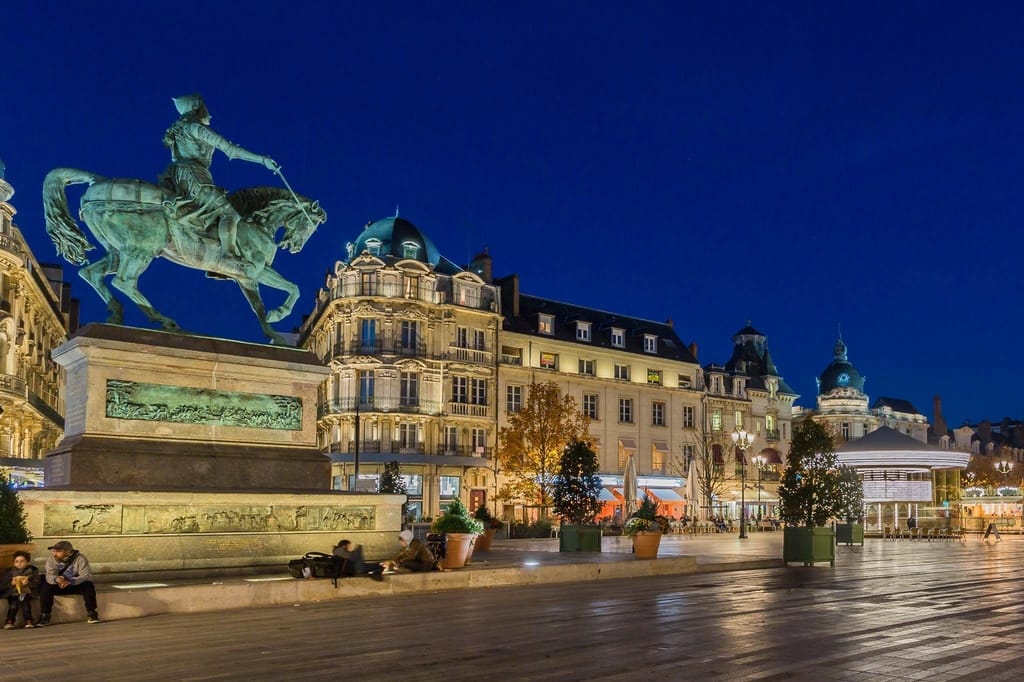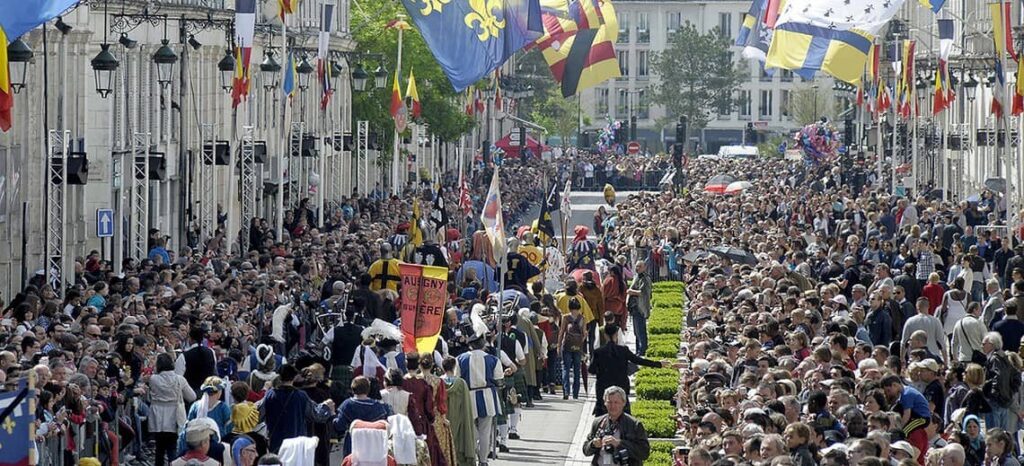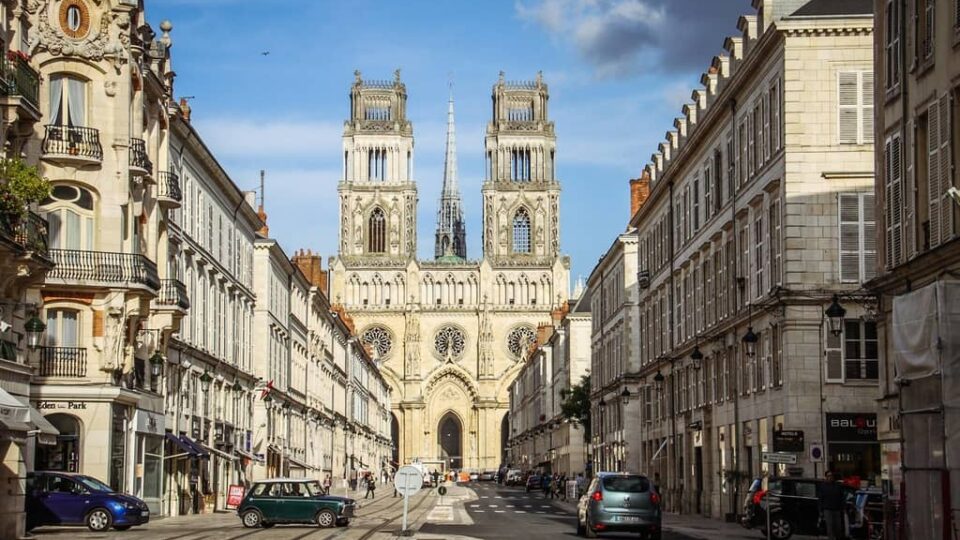What is Orléans France Famous For
When many travelers think of the beautiful Loire Valley, they tend to imagine pictures of extravagant castles. Still, Orléans barely makes it in the picture. If you happen to visit the Loire Valley area, do not miss out on the gem that the dazzling city of Orléans is. It is a fantastic and important town on the Loire River’s banks that is divided into two by the river. The small Saint-Marceau quarter lies to the south. The major part of Orléans is on the northern bank that features the historic center that is ringed by impressive piers and broad boulevards along the river.
The historical center is not difficult to access. It features a big, paved pedestrian area with punctuating lighting that displays the artists’ and artisans’ stalls. Orléans is mostly famous for its association with Joan d’Arc, who led Charles VII in his battle against the English and decisively assisted in defeating the English in the siege of Orléans.
The English eventually captured Joan and place her on trial. Subsequently, she was burned at stake at the age of 19. To French history and the French, the story is of high importance, and in Orléans, visitors will see different tributes like her statue on a horse in the Place du Martoi, a museum in Joan’s honor. Visitors will also have the opportunity to see the house where Joan of Arc lived in the Place du General de Gaulle. Her death is commemorated in the springtime every year with a festival to honor her.
>>Also Read: Things To Do in Loire Valley
Here Are Some Things Orléans is Famous for:
Les Halles-Chatelet
This place is situated in the Place du Chatelet and was built in the late 1800s. Victorian houses and streets were demolished, and a vast square space was made. In 1882, food shops were added. A sheltered mall was added in 1977 to take the place of the old halls and extend the product offerings. The new shopping arcade contains women’s, men’s, and children’s clothing as well as wines and gourmet food products. Visitors can also get fresh meats and fish. At present, Les Halles-Chatelet forms the central shopping area of the city. It is located at Place du Chatelet, 45000 Orléans, and opened on Tuesday-Friday from 8 am to 7:30 pm.
Place du Martroi

Place du Martroi is one of the central squares in the city, but more than its location, it is the hub of Orléan’s political and public life. Chancellery and the Maison de Ville can be found here. Three big avenues connect in Place du Martroi: Rue de la Republique, Rue Bannier, and Rue Royal. A Joan d’Arc bronze equestrian statue stands where she sits on a prancing horse. In 1803 the statue was commissioned as a monument to her.
In 1855, the statue was placed. But in an unexpected turn of events, the statue was made from melted down old English cannons retrieved from the Ministry of Defense. Also, in the square on Friday evenings, there is a food market (5 pm-9:30 pm). Place du Martroi is located at 4 Rue de la République, 45000 Orléans.
Musee des Beaux-Arts
This museum has one of the most stunning collections of European art from the 1700s to contemporary time. You will find lots of works, but just 700 are permanently exhibited featuring paintings, object d’art, and sculptures. Musee des Beaux-Arts also houses the second biggest pastel collection trailing the Louvre.
The museum is famous for its French collections of the 1600s and 1700s, including a segment of the Richelieu Castle’s painted decoration and pieces of some of France’s most brilliant artists like Greuze, Boucher, La Tour, and de Champaigne, etc. Musee des Beaux-Art also has an elegant collection of paintings of Flemish, Italian, Dutch, Spanish, and German art.
Other significant artists are Delacroix, Picasso, Gaugin, and the Orleanais’ artist’s paintings (Realism, Romanticism, landscapes, eclecticism). In addition, check out a sculpture by Rodin and rare prints by Albrecht Dürer. Musee des Beaux-Arts is located at 1 Rue Fernand Rabier, 45000, Orléans.
Cathedral of Saint Croix
This Gothic-style sanctuary overlooks the Rue Joan d’Arc, where are perches stately at an end in the Place de Sainte Croix. Cathedral remains the most photographed scene in Orléans. In the 1600s, the building started and took close to the century’s end to complete. There is ornate stonework at the western façade, alongside three rose windows and towers. The bell tower is the peak of the cathedral.
Inside the cathedral. There is cruciform design with the major nave, transept, side naves, and the oratory. The initial 1200s cathedral was where Joan came for mass in the siege of Orléans. Because little of the initial cathedral stands today, the windows are a moving reminder of history and events that have shaped the city.
>>Also Read: Most Famous Cathedrals in Paris and France
Fetes de Jeanne d’Arc

From April 29 to May 8, the city of Orléans marks the Fetes de Joan d’Arc. The festivities are to commemorate Joan d’Arc’s arrival in the city in springtime 1429 and the subsequent defeat of the English who had declared their chilling intents to take Orléans for over six months. The celebrations start with a re-creation of her arrival in the city. “Joan” is selected from one of the high school-aged girls in the city. Joan arrives in an entire medieval apparel, in procession on the streets which is something she did with the aim of boosting morale in the latter days of the siege.
Orléans’s historical attractions organize special exhibitions to reenact Joan’s movement through the city. For the entire celebration, there are parades of Medieval skills like displays of sword fencing, battle re-enactments, and falconry. Visitors can also watch the events while savoring local Medieval drink of warm mead. Before the cathedral, knights on horseback charge at each other. You will also see a Medieval market with musicians, jugglers, and dancers.
Chateau de Chambord
With the city has a starting point, you can take on the Loire Valley and see the Chateau de Chambord, which is one of France’s most popular countryside chateaus. In the Loire Valley, Chambord is the biggest chateau and was built as a hunting base for Francis I. This place typifies the French Renaissance architecture but was built as a Medieval store with about four stronghold towers hemmed in a surrounding bailey.
The chateau boasts of around 400 rooms, 365 fireplaces, and over 80 staircases. Part of the architectural attractions is the impressive double helix spiral staircase that is the focal point of the place. Both spirals approach the three floors without touching them. There is an unconfirmed story that Leonardo da Vinci designed the staircases.
Parc Floral de la Source
This is an expansive area of parklands and gardens, almost-wild park where the city connects the countryside, which features the ‘source’ of the Loire where people can watch the water come up from the ground. Parc Floral de la Source is divided into the Plateau de Sologne and La Plaine du Val de Loire. In the latter, you many floral gardens: the rose garden, perennials garden, iris garden, tropical garden, a dahlia garden, butterfly house, kitchen garden, and aviaries.
In addition, there is the Jardin de Formes with trees tended in cloud shapes. Walking to the Solange Plateau will be cool where visitors will discover a birch forest and deep oak as well as animal encasements with alpacas and Breton sheep. Parc Floral de la Source is listed as one of France’s most Remarkable Gardens. The gardens are ideal for strolls, relaxation, and picnic, sometimes.
What is Orléans France Famous for – Summary
The city of Orléans is the capital of the French ‘Centre’ region and is located at the eastern end of the Loire. Despite losing many of its iconic monuments to World War II, Orléans has somehow retained its strong character and beauty and forged more, as evidenced in its contemporary popular attractions.
>>Also Read: How to Get from Paris to Loire Valley
